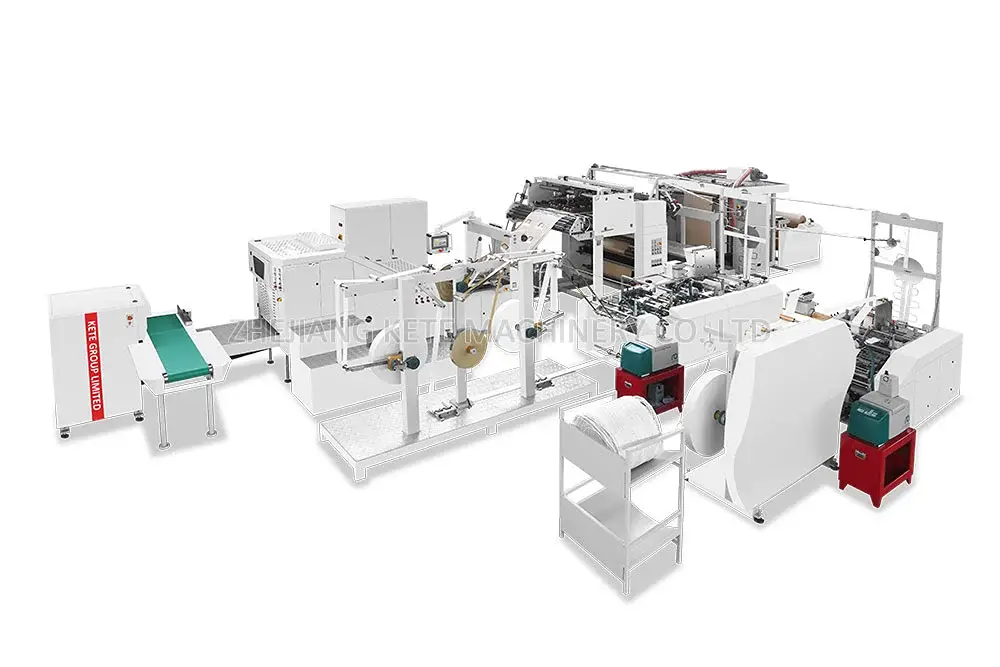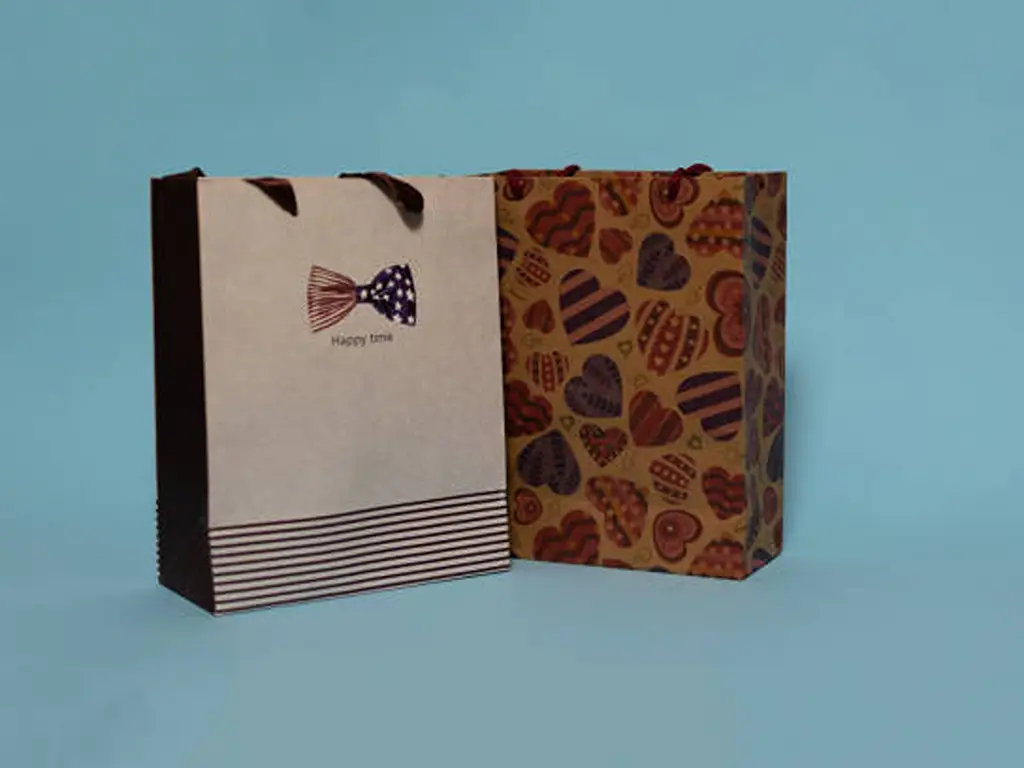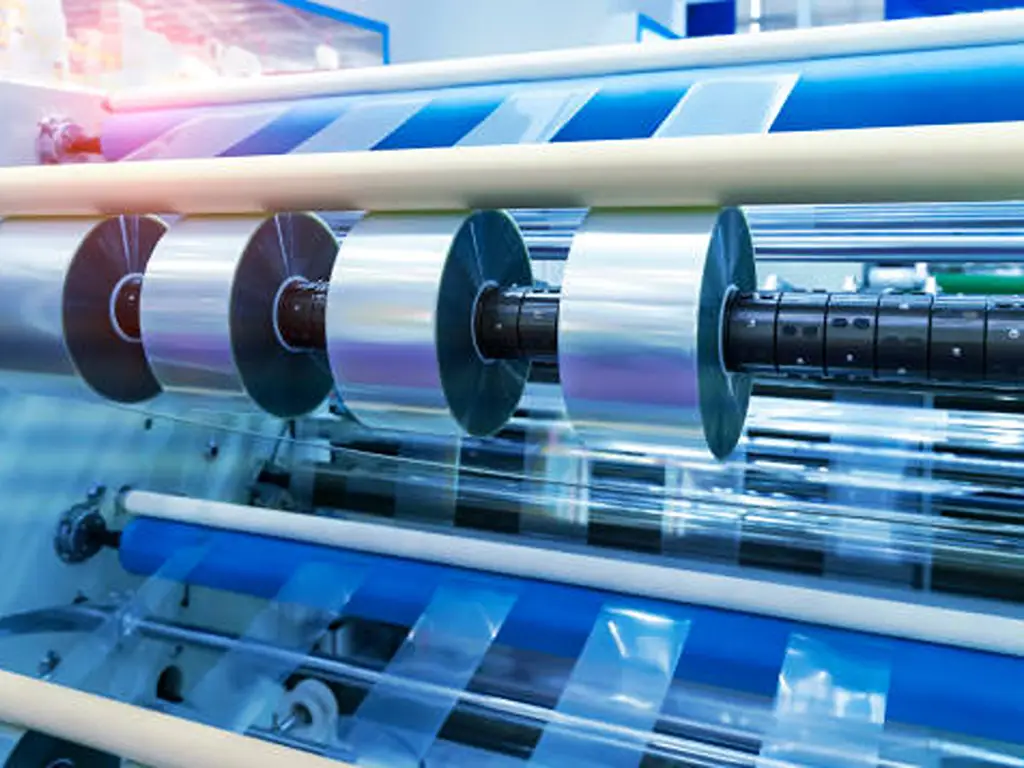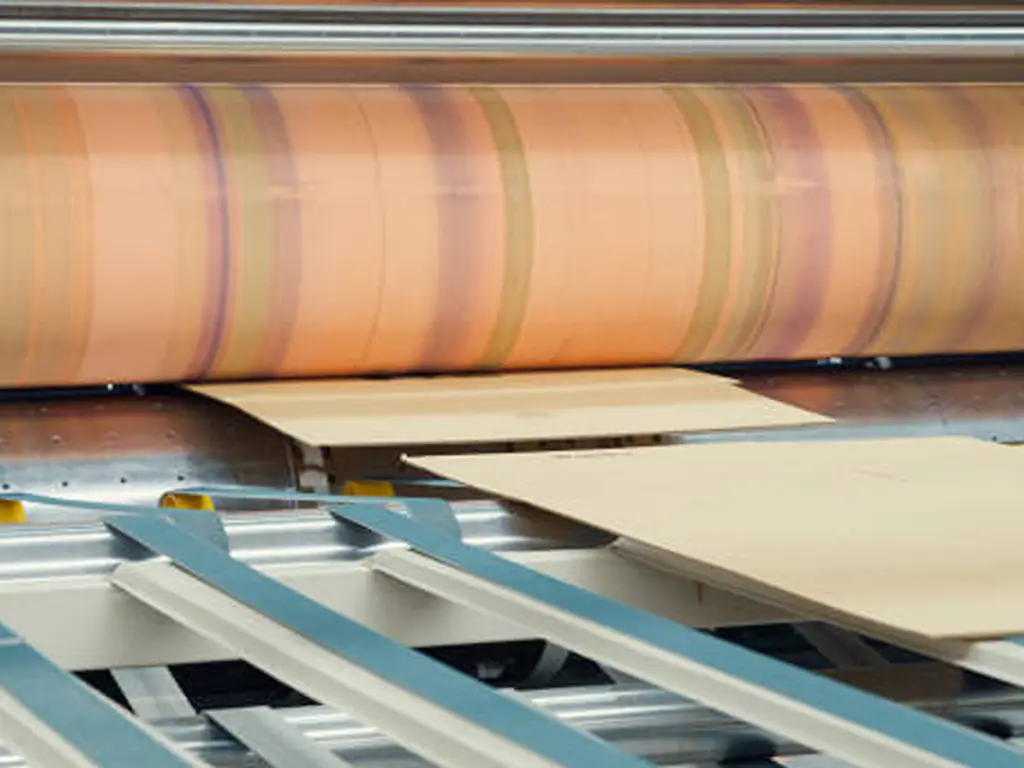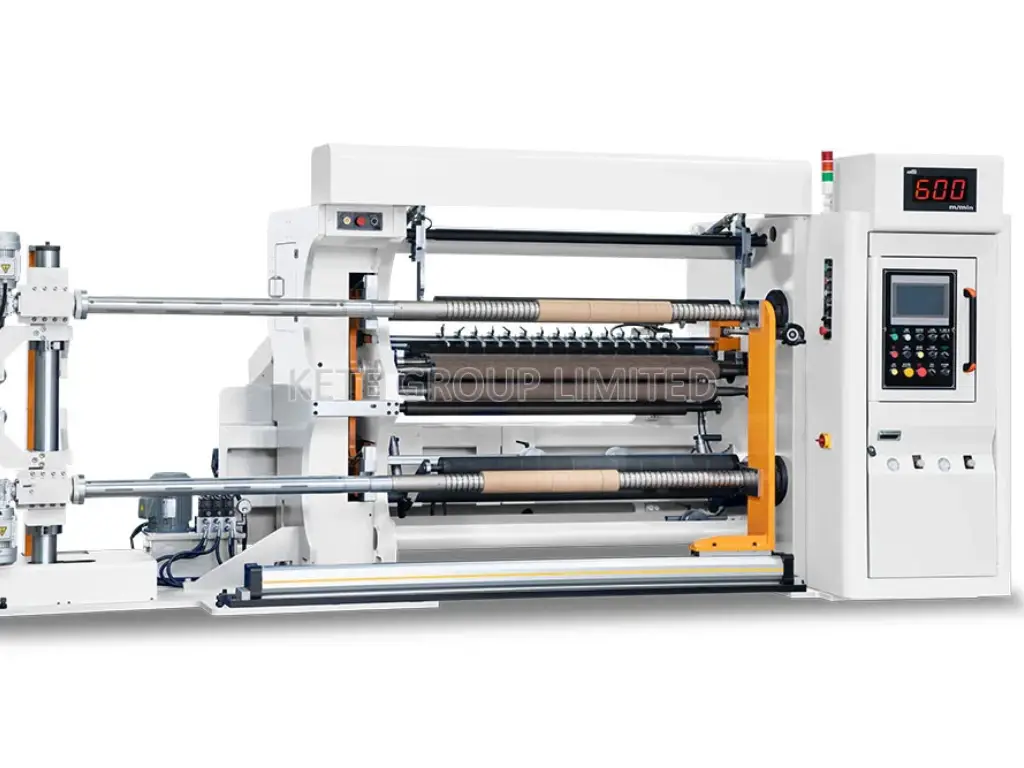
Introduzione al sacchetto di plastica
The use of plastic bags has become an integral part of our daily lives. From zipping to the grocery store to wrapping up our sandwiches, these different types of plastic bags are the real deal! We’ve got the zippy ones, the big trashy ones, and even the earth-hugging biodegradable plastic bags. Ever wondered how is a plastic bag made? The journey from tiny plastic pellets to a finished bag is a fascinating industrial process, centered around a technology known as Blown Film Extrusion. In this guide, we’ll break down exactly how to make plastic bags.
7 Steps: How to Make Plastic Bags?
Vi siete mai chiesti come nasce un semplice sacchetto di plastica? Il processo di produzione dei sacchetti di plastica prevede una serie di fasi intricate, ognuna delle quali contribuisce alla forma finale del sacchetto. Diamo un'occhiata più da vicino al processo di produzione della plastica.
| Passo | Descrizione |
| Crudo Material Transformation | Raw polymers (derived from natural gas or petroleum) are transformed into plastic resin pellets through heating and pressure in machines like pelletizers. |
| Extrusion Process | The resin pellets are fed into an extruder, melted, and forced through a circular die to form a continuous plastic film tube. |
| Blown Film | The film tube is inflated with air, like a balloon, to stretch it to the desired thickness. |
| Cooling and Setting | The plastic film is rapidly cooled using air or water cooling systems to solidify it and ensure uniform thickness. |
| Coloring and Additive Mixing | Dyes and additives (e.g., UV stabilizers, tear resistance agents) are mixed into the molten plastic to give the film color and enhance its properties. |
| Taglio e sigillatura | The plastic film is cut into specific lengths, and the bottom is heat-sealed to form the bag’s base. |
| Printing (Optional) | Flexographic printing is used to apply logos, text, or designs onto the bags. |
| Quality Control and Testing | The bags undergo rigorous tests for thickness, strength, UV resistance, and other properties to ensure they meet quality standards. |
| Imballaggio e distribuzione | The finished plastic bags are counted, stacked, packaged, and prepared for shipping to retailers or consumers. |
Dai polimeri ai pellet di resina: La trasformazione
Polymers are the raw materials, often coming from natural gas or crude oil, that are the starting point for your plastic bag. Before they become the bags that carry your groceries or your lunch, they must first undergo a significant transformation. These polymers are turned into what we call plastic resin pellets. Think of these plastic pellets as the fundamental building blocks; they are the basic units that will be used to create a durable and functional plastic bag..
Now, how does this metamorphosis happen? The process involves a series of controlled stages. First, the raw polymers are subjected to carefully controlled heat and pressure in specialized machines like pelletizers. The quality of these initial pellets directly impacts the final product, which is why the entire manufacturing line, from the extruder onwards, must be robust. This breaks down their complicated chains into simpler, more manageable forms. This process yields small, cylindrical pellets. These pellets are the go-to material for the next steps because they’re consistent and easy to work with.
These aren’t just any old pellets. They are precisely formulated with additives like colorants or UV stabilizers. So, when you see a plastic bag that’s a particular color or extra tough, it’s all thanks to the special recipe of these resin pellets.
In short, this initial stage of turning polymers into resin pellets is critical for the steps that follow. It sets the mood and prepares the stage for the main event. You can’t just skip it and expect a great show.
The Extrusion Process: Crafting the Plastic Film from Extruder
The film extrusion process is where the crucial transformation begins. The resin pellets are loaded into an extruder, a machine that’s about to give our plastic bag its shape.
This is the heart of the manufacturing line. In the industry, this entire stage is called the Blown Film Extrusion process. The molten plastic is forced through a circular die, which shapes it into a continuous tube of thin plastic film. As the tube exits the die, it is pulled upwards and inflated with air, like a long balloon. This stretching is what creates the thin, strong film.
Quando la plastica esce dall'estrusore, viene raffreddata rapidamente con aria fredda o acqua. Questo raffreddamento improvviso solidifica la plastica, trasformandola in un film. Lo spessore di questo film può essere regolato in base alle proprietà desiderate del sacchetto finale. Avete bisogno di una borsa pesante per il trasporto di mattoni? Allora è necessario un film più spesso. Cercate una borsa leggera per trasportare un panino? Una pellicola più sottile farà al caso vostro.
Ma c'è un fatto divertente: la pellicola di plastica non è piatta quando esce dall'estrusore. In realtà è tubolare. Se avete notato che la maggior parte delle buste di plastica per la spesa sono prive di cuciture sui lati, ecco perché. Sono tagliate da un tubo di plastica continuo, che garantisce resistenza e durata.
Il processo di estrusione è una testimonianza delle meraviglie della produzione moderna. È una miscela di scienza, ingegneria e un tocco di arte, che assicura che il film plastico sia adatto allo scopo per cui è stato creato.
Colorazione e aggiunta di additivi
Una volta ottenuta la nostra pellicola di plastica, è il momento di darle un po' di personalità. Mentre il colore naturale del polietilene è piuttosto traslucido, i sacchetti di plastica sono disponibili in una miriade di colori, dall'opaco al trasparente. Come si fa? Entriamo nel mondo dei coloranti e degli additivi.
I coloranti vengono miscelati con la plastica fusa prima dell'estrusione, garantendo un colore uniforme in tutta la pellicola. Sia che si desideri un rosso vibrante o un blu delicato, tutto sta nell'ottenere la giusta miscela di coloranti.
But color isn’t the only thing added to our bags. Additives play a crucial role in enhancing the final plastic bag properties. Need a bag that can withstand sunlight without degrading? UV stabilizers are added. Want a bag that’s more flexible or resistant to tears? There are additives for that too. This allows the bag’s final properties to be tailored for its intended use.
Raffreddamento e impostazione della pellicola
Una volta uscita dall'estrusore, la plastica si trova in uno stato piuttosto vulnerabile. È calda, malleabile e non ha ancora assunto la sua forma finale. È qui che entra in gioco il processo di raffreddamento. Il raffreddamento non consiste solo nell'abbassare la temperatura, ma anche nel garantire che la plastica si solidifichi correttamente, mantenendo lo spessore e la resistenza desiderati.
Air-cooling systems blow cold air onto the film, solidifying it rapidly. In some cases, water cooling systems are used, where the film is passed over chilled rollers. This rapid cooling is crucial. If the film cools too slowly, it can become uneven or develop imperfections. Think of it like chocolate; if it doesn’t cool uniformly, it can become grainy or discolored. The efficiency of the cooling ring is a major factor in production speed. A well-designed air ring, for example, provides a uniform airflow that cools the bubble evenly, preventing weak spots and allowing the machine to run faster without sacrificing quality.
Durante questa fase, anche i rulli svolgono un ruolo fondamentale. Assicurano che la pellicola sia tesa in modo uniforme, evitando grinze o pieghe. Si tratta di un delicato equilibrio tra temperatura e tensione, che garantisce la giusta tensione della pellicola.
Taglio e sigillatura
With our film set and ready, it’s time to transform it into recognizable bags. But how do we go from a continuous roll of plastic film to individual bags? The answer lies in precision cutting and sealing. Before the bags are cut, the rolls of plastic film are often sent to a printing press. Here, logos, text, and graphics are printed onto the film using a process called flexography, which is fast and efficient for large-scale production.
Il film viene inserito in macchine che lo tagliano a intervalli regolari, determinando la lunghezza del sacchetto. Ma un sacchetto non è solo una questione di lunghezza: ha bisogno di una base. È qui che entra in gioco la sigillatura. La parte inferiore di ogni sezione tagliata viene sigillata con il calore. Il calore fonde insieme la plastica, creando un legame forte che forma la base del sacchetto. È essenziale che questa saldatura sia robusta: è ciò che conferisce alla borsa la sua capacità di trasporto.
La parte superiore rimane aperta, pronta all'uso. In alcuni casi, vengono aggiunte altre caratteristiche, come maniglie o cerniere, che migliorano ulteriormente la funzionalità della borsa.
Controllo qualità: Prove di spessore, resistenza e altre proprietà desiderate
Il controllo qualità è l'eroe non celebrato nel mondo della produzione di sacchetti di plastica. Dopo tutto, nessuno vuole un sacchetto che si strappi alla minima pressione. Quindi, come si producono sacchetti di plastica di qualità costante? Attraverso test rigorosi.
Ogni lotto di sacchi viene sottoposto a una serie di test. Lo spessore dei sacchetti viene misurato per garantire l'uniformità. Un sacchetto troppo sottile, infatti, potrebbe non reggere, mentre uno troppo spesso potrebbe essere fonte di sprechi.
Anche i test di resistenza sono fondamentali. Le borse vengono riempite e stirate fino al limite, per garantire che soddisfino gli standard stabiliti dai produttori. Altri test possono includere l'esposizione ai raggi UV (per verificare la resistenza ai danni del sole) o i test di umidità (per verificare la capacità della borsa di respingere l'acqua).
Imballaggio per la distribuzione
Una volta che le borse superano i test a pieni voti, sono pronte per essere spedite nel mondo. Ma prima devono essere confezionati. Le macchine contano e impilano i sacchetti, preparandoli per la distribuzione. Poi vengono inscatolati, pronti per essere spediti ai rivenditori o direttamente ai consumatori.
Tipi di polimeri utilizzati: Di cosa sono fatti i sacchetti di plastica?
Vi siete mai chiesti di cosa sono fatti i sacchetti di plastica che avete in mano? Beh, non siete i soli. I tipi di polimeri utilizzati in questi sacchetti non sono solo un modo di dire, ma sono la spina dorsale dei numerosi usi del sacchetto di plastica.
Polietilene
Let’s start with the big one: polyethylene. It’s the most common material you’ll find in plastic bags. Originating from natural gas and petroleum, polyethylene goes through a whole manufacturing process to become the bags we use daily. There are different types, like low density polyethylene (LDPE), high-density polyethylene (HDPE), linear low-density polyethylene(LLDPE).
LDPE is what you’ll find in those softer, more flexible, and typically more transparent bags—think produce bags at the grocery store.
HDPE is sturdier, more opaque or translucent, and is what you’re holding when you’ve got a bag full of canned goods.
Linear low-density polyethylene (LLDPE) is tougher and has a higher tensile strength than LDPE. It’s often used in stretch films, toys, and some flexible containers.
Polipropilene
Poi c'è il polipropilene, l'altro grande protagonista del mondo dei sacchetti di plastica. Il polipropilene ha un punto di fusione più alto, quindi è il preferito per tutto ciò che deve resistere al calore. Il polipropilene si trova spesso nelle borse della spesa riutilizzabili. Inoltre, è idrofobo, cioè è eccellente nel respingere l'acqua.
A Note on Additives and Colorants
It’s important to know that these base polymers are often just the starting point. To achieve specific properties, manufacturers mix in various additives. For instance, color masterbatch (a concentrated pigment) is added to create bags of any color, UV stabilizers are included to prevent the plastic from degrading in sunlight, and anti-static agents can be used to stop bags from clinging together. These additions are what give a plastic bag its final look, feel, and specific function.
So, whether it’s polyethylene or polypropylene, and with a little help from additives, each bag has its own set of perks that make it the right fit for different jobs.
Gli immensi benefici del sacchetto di plastica
There’s a whole bunch of reasons we can’t live without plastic bags. But let’s just chat about the highlights and key plastic bag properties that make them an important part of our everyday life.
| Leggero | Uno dei vantaggi più significativi delle borse di plastica è la loro leggerezza. Questa caratteristica non solo ne facilita il trasporto, ma riduce anche i costi di trasporto. Quando si spediscono prodotti, ogni grammo è importante e le buste di plastica offrono una soluzione leggera ma robusta che può portare a un sostanziale risparmio sui costi. |
| Durevole | L'apparenza può ingannare. Nonostante la loro struttura sottile, i sacchetti di plastica sono incredibilmente resistenti. Grazie al polietilene ad alta densità (HDPE) e al polietilene a bassa densità (LDPE) utilizzati nel processo di produzione, questi sacchetti possono sostenere una notevole quantità di peso senza strapparsi. Questa resistenza li rende una scelta obbligata per i negozi di alimentari e i punti vendita al dettaglio. |
| Resistenza all'umidità | Un'altra caratteristica notevole dei sacchetti di plastica è la loro capacità di resistere all'umidità. La vostra spesa rimane asciutta anche quando fuori diluvia. Questa è la magia della plastica. Materiali come il polipropilene sono particolarmente efficaci nel tenere a bada l'umidità, rendendo i sacchetti di plastica ideali per la conservazione degli alimenti e per altre applicazioni sensibili all'umidità. |
| Versatilità | I sacchetti di plastica sono disponibili in tutte le forme e dimensioni, il che li rende incredibilmente versatili. Che si tratti di vestiti, generi alimentari o prodotti elettronici, c'è un sacchetto di plastica progettato per soddisfare le vostre esigenze. La varietà si estende a caratteristiche come manici, cerniere e persino al tipo di chiusura, offrendo una gamma di opzioni sia per i consumatori che per le aziende. Inoltre, le confezioni bag-in-box sono spesso utilizzate per liquidi come il vino in scatola e altri liquidi in formato istituzionale. Questo tipo di imballaggio offre un modo comodo ed efficiente per conservare e trasportare i liquidi, riducendo la necessità di sacchetti di plastica monouso. |
Questi vantaggi dimostrano l'immensa utilità dei sacchetti di plastica, che non sono solo una comodità, ma un prodotto di ingegneria e design.

Sustainability in Production: What Happens to Waste Material?
Il dietro le quinte ecologico Quando si producono sacchetti di plastica, c'è un po' di azione dietro le quinte che non arriva al taglio finale. Stiamo parlando dei ritagli, dei sacchetti "oops-che non vanno bene" e degli avanzi che non sono riusciti a uscire dalle macchine. Ma nel mondo di oggi, attento all'ambiente, non li nascondiamo sotto il tappeto.
Recycling: The Green Comeback A good slice of this backstage waste is ready for an encore. Off-cuts and those bags that didn’t pass the audition can be gathered, can be gathered, melted down, and reprocessed into new bags. This recycling loop is an efficient way to reuse raw materials in plastic production, cutting down the need for fresh polymers. It’s not just eco-friendly; it’s also kind to the manufacturer’s wallet.
Disposal: The Thoughtful Exit But let’s face it, not every piece of waste is ready for a second act. Some, due to mixed materials or other issues, just can’t be recycled and reused. But even these get a dignified exit. Instead of being sent directly to a landfill, they’re often incinerated in a controlled setting, keeping the environment’s best interests at heart. And the cherry on top? Some top-notch facilities turn the energy from this process into electricity. Now that’s a bright idea!
Conclusione
From the initial melting of polymer pellets to the final cut and seal, understanding how a plastic bag is made reveals a process of precision engineering. The process of blown film extrusion, followed by automated conversion, transforms simple raw materials into a durable and versatile everyday item. Now that you’ve seen the intricate steps involved, you have a deeper appreciation for the technology and science behind this ubiquitous product.
Date il via alla vostra impresa di sacchetti di plastica con KETE
Understanding how plastic bags are made is the first step. Bringing them to life requires precision machinery engineered for efficiency and quality. The blown film extruders, printing presses, and bag-making machines are all critical components of a successful production line.
If you’re considering entering the plastic bag industry or want to upgrade your current operations, having the right technology partner is key. At KETE, we don’t just supply machines; we provide complete solutions tailored to your production goals. Contact our experts for a technical consultation or to get a quote on a production line that fits your needs.
FAQS
Q: How much of plastic bags are actually recycled?
UN: Although plastic bags are technically recyclable, less than 10% of them are actually recycled. Most end up in landfills, incinerators, or the environment due to contamination, mixed materials, or the lack of specialized recycling facilities.
Q: What are plastic bags actually made of?
UN: Plastic bags are typically made from high-density polyethylene (HDPE) or low-density polyethylene (LDPE), both of which are petroleum-based plastics. These materials are lightweight, durable, and moisture-resistant, making them ideal for packaging and retail use.
Q: Why can’t Ziploc bags be recycled?
UN: Ziploc bags are often made of recyclable polyethylene, but they’re frequently contaminated with food residue, oils, or moisture, which makes them difficult to process through standard curbside recycling programs. Additionally, their zipper seals can include mixed materials. However, some grocery stores offer drop-off bins specifically for clean, dry plastic films, including Ziploc bags.
Q: How many years does it take for plastic bags to decompose naturally?
UN: Plastic bags can take 500 to 1,000 years to break down in the environment. Even then, they don’t fully biodegrade — they fragment into microplastics, which persist in ecosystems and pose long-term threats to wildlife and human health.

